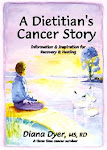 After reading these reason why people are eating at home more, I would respond to this survey by saying "All of the Above!" Additionally, I can eat more food that is locally grown, organic, and sustainably raised, plus I always eat a wider variety and larger portions of vegetables at home.
After reading these reason why people are eating at home more, I would respond to this survey by saying "All of the Above!" Additionally, I can eat more food that is locally grown, organic, and sustainably raised, plus I always eat a wider variety and larger portions of vegetables at home.Three very recent happenings in restaurants:
(1) I was recently in a restaurant where my younger son asked the waitress if the salmon was farm-raised or wild-caught Alaskan. The blank look on her face and non-answer led my son to the likely answer to his question.
(2) To this same restaurant's credit, they did serve their fish on a large bed of fresh kale. Even my nieces and nephews know that I love kale and eat the kale that is placed on the plate for decoration. However, one of them told me that he wonders if it has actually been washed since it not intended to be consumed. Oh, how sad is that. :-( Golly, I sure hope the kale has been washed, but then again, it certainly would be washed and intended to be eaten if I were serving it at home.
(3) I ordered lentil soup (yea - a vegetarian soup in a restauant!) that was a huge disappointment, as I could actually taste the added salt, which is a obvious clue that too much has been added to the recipe. In fact, most restaurant food has a very high salt content even though it is difficult to actually taste. Because of the damage my heart has sustained from various cancer therapies, I need to limit my salt intake to prevent fluid retention and thus extra work for my heart. So rather than fuss or throw this soup away, I did take it home and use it in a future recipe (will post at a later date).
Are you eating at home more these days? What reasons have led to this change? Are you enjoying trying new foods, eating more leisurely, cooking more? I hope you take the time to get down to your local Farmers' Markets to meet your farmers and purchase their fresh produce to eat at home.
I do hope people take a minute to think about and give thanks for their food, the rain and sun, and the farmers who grow it, when eating away from home as well as at their own table. A blessing for our meals, whether we are eating at home or away from home:
Let us give thanks for the food we are about to eat.
May there be food for all,
Abundant and healthful.
Let us have the wisdom to choose to eat only that
Which enhances our precious energy
And sustains us through our labors and rest.
~~Adapted from An Haggadah of Liberation
Diana Dyer, MS, RD







